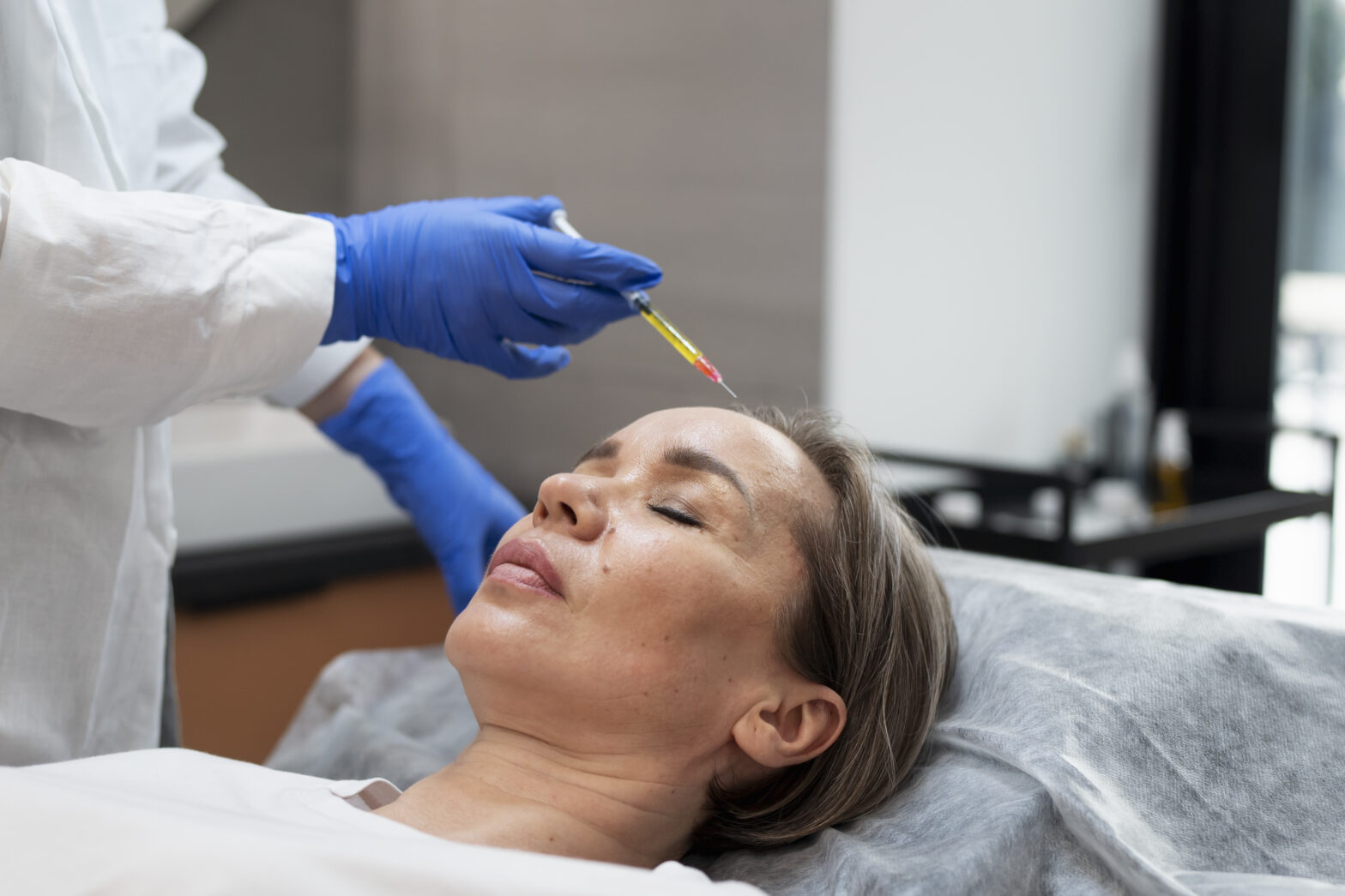In today’s world, many individuals struggle with low testosterone levels, which can have important impacts on their overall health and well-being. Testosterone is crucial in various bodily functions, including muscle and bone health, cognition, sexual function, and overall vitality. However, factors such as stress, aging, trauma, and infections can lead to a decline in testosterone levels, resulting in symptoms of hypogonadism.
This comprehensive guide will explore Testosterone Replacement Therapy (TRT), its benefits, how to obtain it, the types available, what to expect from treatment, associated costs, safety considerations, potential risks, alternatives, and frequently asked questions.
What is Testosterone Replacement Therapy (TRT)?
Testosterone Replacement Therapy (TRT), also known as androgen replacement therapy (ART), is a medical intervention primarily prescribed for individuals experiencing testosterone deficiency, a condition often characterized by symptoms of hypogonadism. Hypogonadism refers to the inadequate production of testosterone by the testes, leading to lower-than-normal levels of this hormone in the bloodstream.
TRT involves administering exogenous testosterone through various delivery methods, such as injections, topical gels or creams, patches, implants, or oral tablets. The choice of administration method depends on individual preferences, medical history, and healthcare professionals’ recommendations.
The primary goal of TRT is to restore testosterone levels in the blood to within the normal physiological range, typically measured in nanograms per deciliter (ng/dl). By restoring testosterone levels, TRT seeks to relieve symptoms linked to low testosterone. These symptoms may include tiredness, diminished sex drive, erectile dysfunction, mood swings, loss of muscle mass, and decreased bone density.
.
TRT isn’t a universal remedy, and whether it’s appropriate depends on several factors. These include the reason behind the testosterone deficiency, the severity of symptoms, overall health, and personal treatment objectives. Therefore, TRT should commence only after a thorough assessment by a qualified healthcare professional. This involves a detailed medical history, physical examination, and relevant lab tests to gauge testosterone levels and rule out any underlying conditions that could mimic or exacerbate low testosterone.
Furthermore, TRT requires careful monitoring and management to ensure its safety and efficacy. Regular follow-up appointments with healthcare providers are essential to assess treatment response, adjust dosage as needed, monitor for potential side effects, and address concerns or questions that may arise during therapy.
Overall, while TRT can offer significant benefits for individuals with testosterone deficiency, including improved quality of life and overall well-being, it is valid to approach this treatment option judiciously and under the guidance of experienced healthcare professionals.
1. Improved Sexual Function:
Testosterone has a crucial role in improving sexual function in both men and women. For men, adequate levels of testosterone are necessary for maintaining libido, or sexual desire, as well as for achieving and sustaining erections. Research has shown that TRT can help restore libido and improve erectile function in men with low testosterone levels.
Furthermore, TRT can also benefit women with low testosterone levels by enhancing libido and sexual satisfaction. While testosterone is typically present in smaller amounts in women compared to men, it still plays a role in regulating sexual function and overall well-being. Research suggests that TRT may help improve libido and sexual function in women with low testosterone levels, leading to enhanced sexual satisfaction and quality of life.
Overall, improved sexual function is one of the primary benefits of TRT for individuals with low testosterone levels, contributing to greater intimacy, satisfaction, and overall quality of life.
2. Maintenance of Bone Density:
Osteoporosis, a condition marked by fragile and weakened bones, poses a significant health risk, especially for older individuals. Testosterone is important for maintaining bone density and resilience, and low testosterone levels have been linked to a heightened susceptibility to osteoporosis and fractures.
Studies have indicated that TRT plays a role in preserving bone density and lowering the risk of osteoporosis among individuals with low testosterone levels. A study in the Journal of Clinical Endocrinology & Metabolism revealed that men undergoing TRT exhibited notable enhancements in bone mineral density, contrasting with those who did not undergo treatment. These results imply that TRT could contribute to maintaining bone health and mitigating fracture risks in individuals with low testosterone levels.
Moreover, maintaining bone density is essential for overall musculoskeletal health and mobility, particularly as individuals age. By preserving bone density, TRT can improve quality of life and diminish the risk of fractures and mobility limitations associated with osteoporosis.
3. Cognitive Function:
Testosterone has been shown to influence cognitive function, including memory, attention, and executive function. Low testosterone levels have been combined with cognitive decline and a high risk of conditions such as Alzheimer’s disease and dementia.
Research suggests that TRT may help improve cognitive function in individuals with low testosterone levels. In a study published in the Journal of the American Geriatrics Society, researchers found that older men who received TRT experienced improvements in cognitive function compared to those who did not receive treatment. Specifically, TRT was associated with improvements in memory, attention, and executive function, suggesting that testosterone may play a role in preserving cognitive health in older adults.
Furthermore, TRT has also been shown to improve mood and overall well-being, positively impacting cognitive function. By enhancing mood and reducing symptoms of depression and anxiety, TRT may indirectly improve cognitive function and overall mental clarity in individuals with low testosterone levels.
Maintaining cognitive function is essential for preserving independence and quality of life, particularly as individuals age. By potentially improving cognitive function, TRT may help in brain health and diminish the risk of cognitive decline in individuals with low testosterone levels.
4. Developed Muscle Mass:
Testosterone is vital for muscle development, particularly in men. Lower testosterone levels may lead to decreased muscle mass and strength and reduced exercise performance and physical function.
Studies have indicated that TRT contributes to the enhancement of muscle mass and strength among individuals with low testosterone levels. A study in the Journal of Clinical Endocrinology & Metabolism demonstrated that men undergoing TRT exhibited substantial improvements in both muscle mass and strength compared to those not receiving treatment. Notably, TRT was linked to an increase in lean body mass and muscle strength, highlighting the pivotal role of testosterone in muscle growth and upkeep.
Moreover, TRT has also improved exercise performance and physical function, enhancing mobility and overall physical well-being. By increasing muscle mass and strength, TRT can help support functional independence and reduce the risk of mobility limitations associated with sarcopenia or age-related muscle loss.
Overall, increased muscle mass is a significant benefit of TRT for individuals with low testosterone levels, contributing to improved physical function, exercise performance, and overall quality of life.
5. Enhanced Well-being:
Testosterone is vital in regulating mood, energy levels, and overall well-being. When testosterone levels are low, individuals may experience symptoms like fatigue, irritability, and depression, which can greatly affect their quality of life and daily functioning.
Studies have suggested that TRT can effectively alleviate mood disturbances and enhance overall well-being in individuals with low testosterone levels. For instance, a study in the Journal of Clinical Endocrinology & Metabolism revealed that men undergoing TRT experienced notable improvements in mood and energy levels compared to those not receiving treatment. Specifically, TRT was linked to reductions in symptoms of depression and fatigue, along with enhancements in overall quality of life.
Moreover, TRT has also been shown to enhance libido and sexual satisfaction, contributing to greater intimacy and relationship satisfaction. By improving mood, energy levels, and overall well-being, TRT can help individuals with low testosterone levels lead more fulfilling and satisfying lives.
Overall, enhanced well-being is a significant benefit of TRT for individuals with low testosterone levels, contributing to improved quality of life and overall happiness.
How to Obtain TRT:
TRT is available only with a prescription and requires a comprehensive evaluation by a qualified healthcare provider. The process typically involves:
1. Medical History: Your doctor will review your medical history, including any symptoms suggestive of low testosterone and underlying health conditions.
2. Physical Examination: A thorough physical examination will assess signs of hypogonadism and other related conditions.
3. Blood Tests: Blood tests will measure testosterone levels and rule out other potential causes of symptoms.
4. Treatment Plan: Based on the evaluation results, your doctor will develop a personalized treatment plan that includes the type, dosage, and mode of administration of TRT.
Types of Testosterone Treatments:
TRT can be administered in various forms, including:
1. Injectable: Injectable testosterone is available in short-acting or long-acting formulations and is typically administered via intramuscular injection.
2. Topical: Topical formulations, such as gels, creams, and patches, are applied directly to the skin and gradually absorbed into the bloodstream.
3. Buccal Patches: Buccal patches are placed above the upper teeth and release testosterone over a specified period.
4. Testosterone Implants: Implants are small pellets inserted under the skin, releasing testosterone slowly over several months.
5. Oral: Oral testosterone tablets are less common due to potential liver toxicity and are typically reserved for individuals unable to use other forms of TRT.
6. Intranasal: Nasal testosterone gel is applied inside the nose and absorbed through the nasal mucosa.
Treatment choice depends on individual preferences, lifestyle factors, and medical considerations and should be discussed with your healthcare provider.
What to Expect from TRT:
After initiating TRT, individuals can expect improvements in testosterone levels within a week, with symptom relief and other benefits becoming apparent over time. These may include increased energy, libido, muscle mass, bone density, and improved mood and overall well-being.
Regular monitoring is essential to assess treatment response, adjust dosage, and detect potential side effects or complications.
Is TRT Safe?
While TRT can offer significant benefits for individuals with low testosterone levels, it is not without risks. Potential short-term side effects include acne, hair loss, mood changes, and fluid retention. Long-term risks may include prostate enlargement, cardiovascular events, liver dysfunction, and infertility.
It is essential to discuss the potential risks and benefits of TRT with your healthcare provider and undergo regular monitoring to ensure safe and effective treatment.
Risks of TRT:
Despite its benefits, TRT may not be suitable for everyone and may pose risks for certain individuals. These include:
1. Prostate Cancer: TRT may stimulate the growth of existing prostate cancer cells and should be avoided in individuals with a history of prostate cancer or elevated prostate-specific antigen levels.
2. Sleep Apnea: TRT can exacerbate sleep apnea symptoms and should be used cautiously in individuals with this condition.
3. Cardiovascular Risks: Some studies suggest an association between TRT and a grown risk of cardiovascular events such as stroke and heart attack, particularly in older individuals.
4. Elevated Hematocrit Levels: TRT can increase red blood cell production, leading to elevated hematocrit levels and an increased risk of blood clots.
5. Liver Dysfunction: Long-term use of oral testosterone may lead to liver toxicity and should be avoided in individuals with pre-existing liver conditions.










